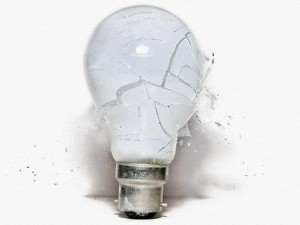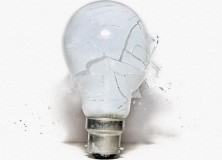 The incandescent light bulb will soon be a collectors item. The invention that brought us out of the dark, but deemed too inefficient in today’s environmentally aware society, will be phased off the U.S. market by the end of 2014 under the energy law approved by Congress in 2007. Although this will reduce electricity costs and minimize new bulb purchases in every household in America, you may be feeling in the dark about the loss of your old, relatively reliable source of light. Here’s a primer on the light bulb phase-out and what will mean to you:
The incandescent light bulb will soon be a collectors item. The invention that brought us out of the dark, but deemed too inefficient in today’s environmentally aware society, will be phased off the U.S. market by the end of 2014 under the energy law approved by Congress in 2007. Although this will reduce electricity costs and minimize new bulb purchases in every household in America, you may be feeling in the dark about the loss of your old, relatively reliable source of light. Here’s a primer on the light bulb phase-out and what will mean to you:
Why are they taking my light bulbs away?
Moving to more efficient lighting is one of the lowest-cost ways for the nation to reduce electricity use and greenhouse gases. In fact, it actually will save households money because of lower utility bills. Ninety percent of the energy that an incandescent light bulb burns is wasted as heat. And yet, sales of the most common high-efficiency bulb available—the compact fluorescent (CFL)—amount to only 5 percent of the light bulb market. Australia became the first country to ban all incandescent bulbs in 2010. The changeover in the United States began in 2012 and will be eliminated completely before 2015. However, don’t be surprised if some manufacturers phase out earlier.
How do I save money, when a CFL costs six times as much as an old-fashioned bulb?
Each cone-shaped spiral CFL cost about $3 when they first appeared on the market, compared with 50 cents for a standard bulb. Today, the price of CDL’s have dropped significantly, but so have the incandescent bulbs that can be found at $1 for a pack of 4. However, a CFL uses about 75 percent less energy and lasts five years instead of a few months. A household that invested $90 in changing 30 fixtures to CFLs would save $440 to $1,500 over the five-year life of the bulbs, depending on your cost of electricity. Look at your utility bill and imagine a 12 percent discount to estimate the savings.
CFLs don’t really last as long as they say.
That’s because we treated them like incandescent bulbs. Turning a CFL on and off frequently shortens its life, which is why the government’s Energy Star program says to leave them on for at least 15 minutes at a time. Also, if you have dimmable light fixtures, make sure to buy CFLs labeled “dimmable,” or they may burn out within a few weeks of use. All CFLs that carry the government’s Energy Star label are required to carry a two-year limited warranty, so contact the manufacturer if your bulb burns out prematurely. The Energy Star website has a good FAQ on CFLs.
Disclaimer: On January 4, 2016, the owner of WestEastonPA.com began serving on the West Easton Council following an election. Postings and all content found on this website are the opinions of Matthew A. Dees and may not necessarily represent the opinion of the governing body for The Borough of West Easton.







